喹吖啶酮, 99%,蓝相,Quinacridone
产品编号:西域试剂-WR187636| CAS NO:1047-16-1| MDL NO:MFCD00059956| 分子式:C20H12N2O2| 分子量:312.33
本网站销售的所有产品仅用于工业应用或者科学研究等非医疗目的,不可用于人类或动物的临床诊断或者治疗,非药用,非食用,
| 产品名称 | 喹吖啶酮, 99%,蓝相 |
|---|---|
| 英文名称 | Quinacridone |
| CAS编号 | 1047-16-1 |
| 产品熔点 | 390 °C |
| 产品沸点 | 568.5ºC at 760 mmHg |
| 产品密度 | 1.371 g/cm3 |
| 产品闪点 | 221.3ºC |
| 精确质量 | 312.09000 |
| PSA | 65.72000 |
| LogP | 3.67600 |
| 外观性状 | 红色粉末 |
| 稳定性 | 色泽鲜艳。各项牢度性能优异,耐有机溶剂和耐热性高,与四氟乙烯混合、经430ºC高温挤压不变色,并在各种塑料中不迁移。耐晒性和耐气候性优良,即使高度稀释仍不降低其牢度。 |
| 储存条件 | 存放于惰性气体之中;避免空气 |
相关文档
化学品安全说明书(MSDS)
下载MSDS质检证书(COA)
相关产品
| RTECS号 | VA8533500 |
|---|---|
| 海关编码 | 2933990090 |
|
Section I.Chemical Product and Company Identification Chemical Name Quinacridone (purified by sublimation) Portland OR SynonymQuino[2,3-b]acridine-7,14-dione, 5,12-dihydro- (CA INDEX NAME); 5,12-Dihydroquin[2,3-b]acridine- 7,14-dione; Pigment Violet 19; CI# 46500; CI# 73900 Chemical FormulaC20H12N2O2
CAS Number1047-16-1 Section II.Composition and Information on Ingredients Chemical NameCAS Number Percent (%)TLV/PELToxicology Data Quinacridone (purified by sublimation)Min. 99.0 (N) Not available.Rat LD50 (oral) >20 mL/kg 1047-16-1 Section III. Hazards Identification No specific information is available in our data base regarding the toxic effects of this material for humans. However, Acute Health Effects exposure to any chemical should be kept to a minimum. Skin and eye contact may result in irritation. May be harmful if inhaled or ingested. Always follow safe industrial hygiene practices and wear proper protective equipment when handling this compound. CARCINOGENIC EFFECTS : Not available. Chronic Health Effects MUTAGENIC EFFECTS : Not available. TERATOGENIC EFFECTS : Not available. DEVELOPMENTAL TOXICITY: Not available. Repeated or prolonged exposure to this compound is not known to aggravate existing medical conditions. Section IV.First Aid Measures Eye ContactCheck for and remove any contact lenses. In case of contact, immediately flush eyes with plenty of water for at least 15 minutes. Get medical attention. Skin ContactIn case of contact, immediately flush skin with plenty of water. Remove contaminated clothing and shoes. Wash clothing before reuse. Thoroughly clean shoes before reuse. Get medical attention. InhalationIf the victim is not breathing, perform mouth-to-mouth resuscitation. Loosen tight clothing such as a collar, tie, belt or waistband. If breathing is difficult, oxygen can be administered. Seek medical attention if respiration problems do not improve. IngestionINDUCE VOMITING by sticking finger in throat. Lower the head so that the vomit will not reenter the mouth and throat. Loosen tight clothing such as a collar, tie, belt or waistband. If the victim is not breathing, perform mouth-to-mouth resuscitation. Examine the lips and mouth to ascertain whether the tissues are damaged, a possible indication that the toxic material was ingested; the absence of such signs, however, is not conclusive. Section V.Fire and Explosion Data Not available. FlammabilityMay be combustible at high temperature.Auto-Ignition Flash PointsNot available.Flammable LimitsNot available. Combustion ProductsThese products are toxic carbon oxides (CO, CO2), nitrogen oxides (NO, NO2). Fire Hazards Not available. Explosion HazardsRisks of explosion of the product in presence of mechanical impact: Not available. Risks of explosion of the product in presence of static discharge: Not available. Fire Fighting MediaSMALL FIRE: Use DRY chemical powder. LARGE FIRE: Use water spray, fog or foam. DO NOT use water jet. and Instructions Consult with local fire authorities before attempting large scale fire-fighting operations. Continued on Next Page Quinacridone (purified by sublimation) Section VI.Accidental Release Measures Spill CleanupUse a shovel to put the material into a convenient waste disposal container. Finish cleaning the spill by rinsing any contaminated surfaces with copious amounts of water. Consult federal, state, and/or local authorities for assistance on Instructions disposal. Section VII. Handling and Storage Handling and StorageKeep away from heat. Mechanical exhaust required. When not in use, tightly seal the container and store in a dry, cool place. Avoid excessive heat and light. Do not breathe dust. Information Always store away from incompatible compounds such as oxidizing agents. Section VIII. Exposure Controls/Personal Protection Use process enclosures, local exhaust ventilation, or other engineering controls to keep airborne levels below recommended Engineering Controls exposure limits. If user operations generate dust, fume or mist, use ventilation to keep exposure to airborne contaminants below the exposure limit. Splash goggles. Lab coat. Dust respirator. Boots. Gloves. Suggested protective clothing might not be sufficient; consult a Personal Protection specialist BEFORE handling this product. Be sure to use a MSHA/NIOSH approved respirator or equivalent. Exposure LimitsNot available. Section IX. Physical and Chemical Properties Solid. (Yellowish-red crystal ~ powder.)Solubility Physical state @ 20°CNot available. Not available. Specific Gravity 312.32 Molecular WeightPartition CoefficientNot available. Boiling PointNot available.Vapor PressureNot applicable. 390°C (734°F)Not available. Melting PointVapor Density Not available.VolatilityNot available. Refractive Index Not available. Critical TemperatureNot available.Odor ViscosityNot available.TasteNot available. Section X.Stability and Reactivity Data Stability This material is stable if stored under proper conditions. (See Section VII for instructions) Conditions of InstabilityAvoid excessive heat and light. Incompatibilities Reactive with oxidizing agents. Section XI. Toxicological Information VA8533500 RTECS Number Routes of ExposureEye Contact. Ingestion. Inhalation. Rat LD50 (oral) >20 mL/kg Toxicity Data Chronic Toxic EffectsCARCINOGENIC EFFECTS : Not available. MUTAGENIC EFFECTS : Not available. TERATOGENIC EFFECTS : Not available. DEVELOPMENTAL TOXICITY: Not available. Repeated or prolonged exposure to this compound is not known to aggravate existing medical conditions. Acute Toxic EffectsNo specific information is available in our data base regarding the toxic effects of this material for humans. However, exposure to any chemical should be kept to a minimum. Skin and eye contact may result in irritation. May be harmful if inhaled or ingested. Always follow safe industrial hygiene practices and wear proper protective equipment when handling this compound. Section XII.Ecological Information Not available. Ecotoxicity Not available. Environmental Fate Continued on Next Page Quinacridone (purified by sublimation) Section XIII. Disposal Considerations Waste DisposalRecycle to process, if possible. Consult your local regional authorities. You may be able to dissolve or mix material with a combustible solvent and burn in a chemical incinerator equipped with an afterburner and scrubber system. Observe all federal, state and local regulations when disposing of the substance. Section XIV. Transport Information Not a DOT controlled material (United States). DOT Classification PIN NumberNot applicable. Proper Shipping NameNot applicable. Packing Group (PG)Not applicable. DOT Pictograms Section XV. Other Regulatory Information and Pictograms TSCA Chemical InventoryThis compound is ON the EPA Toxic Substances Control Act (TSCA) inventory list. (EPA) WHMIS ClassificationOn DSL. (Canada) EINECS Number (EEC) 213-879-2 EEC Risk StatementsNot available. SECTION 16 - ADDITIONAL INFORMATION N/A |
|
~99% 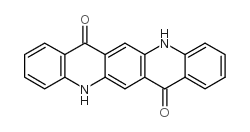
1047-16-1 |
| 文献:MCA TECHNOLOGIES GMBH Patent: WO2005/85364 A1, 2005 ; Location in patent: Page/Page column 17 ; |
|
~90% 
1047-16-1 |
| 文献:MCA TECHNOLOGIES GMBH Patent: WO2005/85364 A1, 2005 ; Location in patent: Page/Page column 13 ; |
|
~% 
1047-16-1
详细
|
| 文献:US2005/11403 A1, ; Page 13 ; |
|
~% 
1047-16-1 |
| 文献:US2844484 , ; |
| 上游产品 5 | |
|---|---|
| 下游产品 3 | |
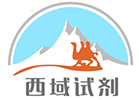





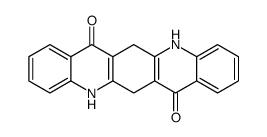
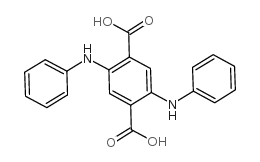
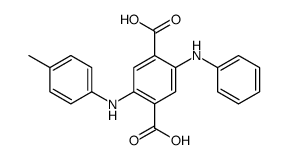
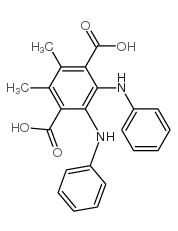
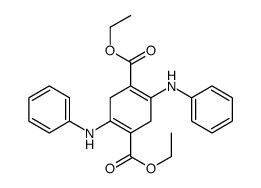
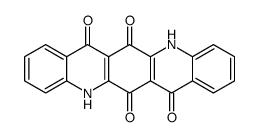
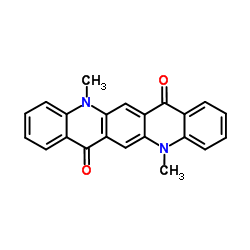
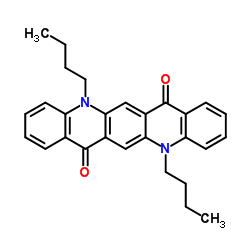





 浙公网安备 33010802013016号
浙公网安备 33010802013016号